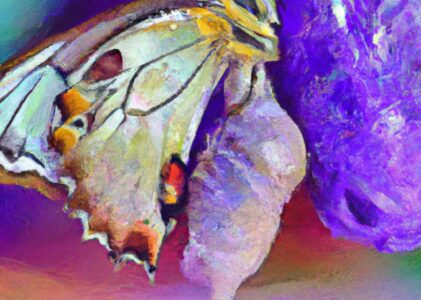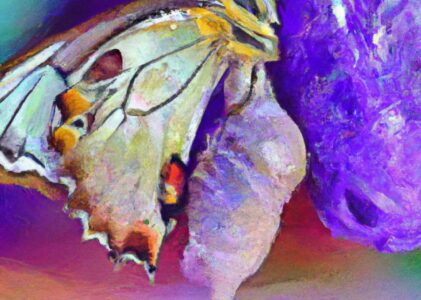Have you had the experience of losing yourself? I have had this experience so often in my life that I nearly had a breakdown. I remember sitting on the edge of my bed with my head in my hands feeling as if I didn’t exist, only my body did. I was crushed, broken and an empty shell. I had no worth, no existence and I wanted to die.
I also remember having the experience of walking past a mirror, catching a glimpse of myself and saying “Hello You! Where have you been hiding?
You may not have had an experience quite like this but we have all experienced the notion of Who Am I?
It is quite common for a woman to get caught up in being a partner/spouse, mother, friend, daughter, professional, Ms. Fixit, superwoman; all-knowing, all-seeing wonder of the world and lover. Where does she find herself in all of these roles? My gosh, just reading this makes me think women are the epitome of the multiple personality disorder.
No wonder that when divorce, abuse and life’s traumas hit home she cracks and breaks. It is difficult to keep all of these balls in the air. But it is during the times when her world falls apart that she has the opportunity to rediscover her essence, her soul, her one true love, herself.
I like to think of the opportunity to rediscover myself as a gift. Thinking this way does not start out like that. Heavens no!
Thinking like this occurs during the process of self-discovery. When I realized I’d been given a gift everything changed. I focused more deeply. I got excited about the process, of the discovery. And then reams of information came my way I don’t think I ever could have found if I had spent thousands of hours in the library.
So, accept where you are at. Acknowledge and confirm your emotions, even the painful ones. Acknowledge your emotions as valid responses to your experiences. Accept yourself as you are, scars and all. This is the beginning of the self-discovery process.
Don’t forget about mind moves. Mind moves or the changing of your mind involves moving from a victim mentality to a mind SET of empowerment. Instead of feeling helpless and at the mercy of external circumstances, recognize your natural strength and responsibility in shaping your own destiny. This is the second step to self-discovery.
Allow me to introduce you a few other steps on the path to Hello You. These are easy things you can do to open the door to your heart, your soul, your one true love, you.
Reflect on your core values and beliefs. When was the last time you thought about your core values and beliefs
Values are often taken for granted. They’re just there. We adopt values from our families, friends, cultures, schools, and workplaces. We gather them like flowers along the path. Once we have them, we don’t really look at them and we don’t determine if they benefit our life or need to change. We may glance at them but we don’t really see them. My therapist showed me that values are of the ultimate importance, and it is important to determine the values that are non-negotiable.
Understanding your values can provide clarity and direction to your life.
Explore your strengths and weaknesses. What are you naturally good at? Organization? Networking? Entertaining? Design? Leadership? Administration? Caring for others? Motherhood?
Where do you have opportunities for growth? Emotional regulation? Self-Acceptance? Body positivity? Boundaries? Finding purpose?
Embrace your strengths and weaknesses. This leads to greater self-awareness, builds confidence and self-esteem.
Investigate your passions and interests. What activities bring you joy and fulfillment? If you haven’t gone for a bike ride lately, rent a bike for a day and explore your area. Do you enjoy the water? Rent a kayak or tube and join a group floating the nearest river. Have you wanted to try knitting or crocheting? There are groups everywhere to join in. Stop by a local yarn or craft shop and ask about them. Pick up a paint brush. Paint a room or a canvas. Are you concerned about world events and activism? Browse Facebook, the “net” or Instagram and find a place that aligns with your heart.
Engaging in activities that align with your passions leads to a deeper sense of purpose and fulfillment.
Ponder your life experiences, both positive and negative. Play the “I Remember” game. What have been the defining moments in your life? What lessons did you learn from them? You will laugh and you will cry. Both emotions are good for your soul.
Pondering on past experiences can provide valuable insights into your identity and aspirations. And please write them down. Memories not written down are eventually forgotten. I have the thought that if I ever get dementia or Alzheimer’s I would like my family to read these memories to me and the lessons I learned from them.
Cultivate mindfulness and self-reflection practices. Mindfulness techniques such as meditation, journaling, and deep breathing help you connect with your inner self and gain clarity on your thoughts and emotions.
Set goals and intentions for your personal growth. What do you want to achieve in various areas of your life, such as career, relationships, and health? Setting specific and measurable goals provides motivation and direction for growth. Start small. What do you want to accomplish this month or even this week? Pick one area of your life and set one goal or intention.
Step out of your comfort zone and embrace a new challenge. Your comfort zone is that safe, secure and warm area you like live in? Get out of it! Try something that makes your blood pump and mouth go dry.
Growth often occurs outside of the comfort zone, so I encourage you to take a risk and try a new experience that stretches your abilities and expands your horizons.
A friend of mine challenged me to do something that scared me once a week for 12 weeks. I took the challenge. I did not find it too difficult to find something that scared me. I had become so cocooned that even smiling at someone on my daily walk made me sweat.
After learning to smile, I got the nerve to say hello. I held me head up, smiled then said a word or two and kept walking. Pretty soon this practice is now part of who I am and what I do to show kindness in my area of the world. I have made friends in my neighbourhood.
Seek feedback and support from others. Whether it’s from friends, mentors, or professionals, or support groups, feedback provides valuable insights and perspectives for growth.
Find “your tribe”, a place where you share something in common and start sharing. Start asking questions of others. Give input and get input. We are meant to be in community.
Surrounding yourself with supportive individuals can provide encouragement and accountability. Something we all need to thrive.
Prioritize continual learning and development. Whether through formal or informal education, self-study, or experiential learning, seek opportunities for growth and expansion of your knowledge and skills. Become a lifelong learner.
Cultivate resilience and adaptability in the face of challenges and setbacks. Yes, that means welcoming challenges and setbacks. Realize this is a period of profound growth and it is not to be feared.
Life is full of ups and downs, but those who can bounce back and adapt to change are better positioned for growth and success.
You don’t need to try everything on this list. Pick one. Start there.
By exploring areas of self-discovery and committing to personal growth, you embark on a transformative journey of self-awareness, empowerment, confidence and fulfillment.
Imagine catching a glimpse of yourself in the mirror, liking what you see and saying, “Hello You! Where have you been hiding?”





